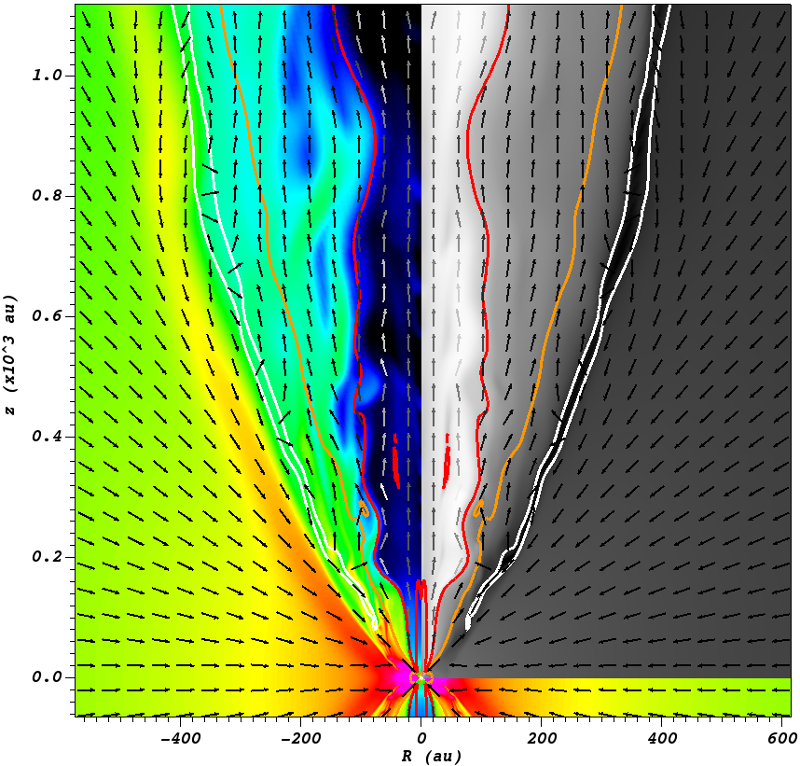|
We present the first radiation-magneto-hydrodynamics (RMHD) simulations of jet formation around a massive protostar. Simulations follow the collapse of magnetized cores to the birth of a massive protostar, the formation of a circumstellar disk, and eventually the launching, acceleration, collimation, and propagation of the jet as well as its interaction with the still infalling environment.
Numerical convergence is investigated by varying the spatial resolution by 25 in five dedicated simulation runs, down to a maximum spatial resolution of 0.03 au. The impact of radiation transport on the thermodynamics of the system is studied by varying the input opacity over eight orders of magnitude, plus isothermal comparison runs.
We find that non-ideal MHD in combination with sub-au spatial resolution is required to model the jet launching properly, which explains the non-existence of jets in previous (R)MHD models of massive star formation in the literature. Circumstellar disk formation is made possible in the magnetized collapsing core by non-ideal MHD processes despite of magnetic braking, and disks can grow as large as 1000 au.
The detailed jet analyses reveal that the launching, acceleration, and collimation physics are well described by two seminal semi-analytical worksfor the fast, collimated jet, and for the slower, broader disk wind, respectively. Because of the fact that the driving host star is still deeply embedded in an infalling environment, these outflows are dynamically interacting with the environment during propagation. One effect visualized in the figure is the formation of high-density cavity walls at the interface between the infalling envelope and the entrained material from the outstreaming jet.
The overall ejection-to-accretion efficiencies -- including the effect of entrainment of envelope material -- are found to be small, of the order of a few percent. The jet lifetime is found to be set by magnetic braking processes in the jet launching region, and, hence, depends strongly on the magnetic dissipation strength.
|

